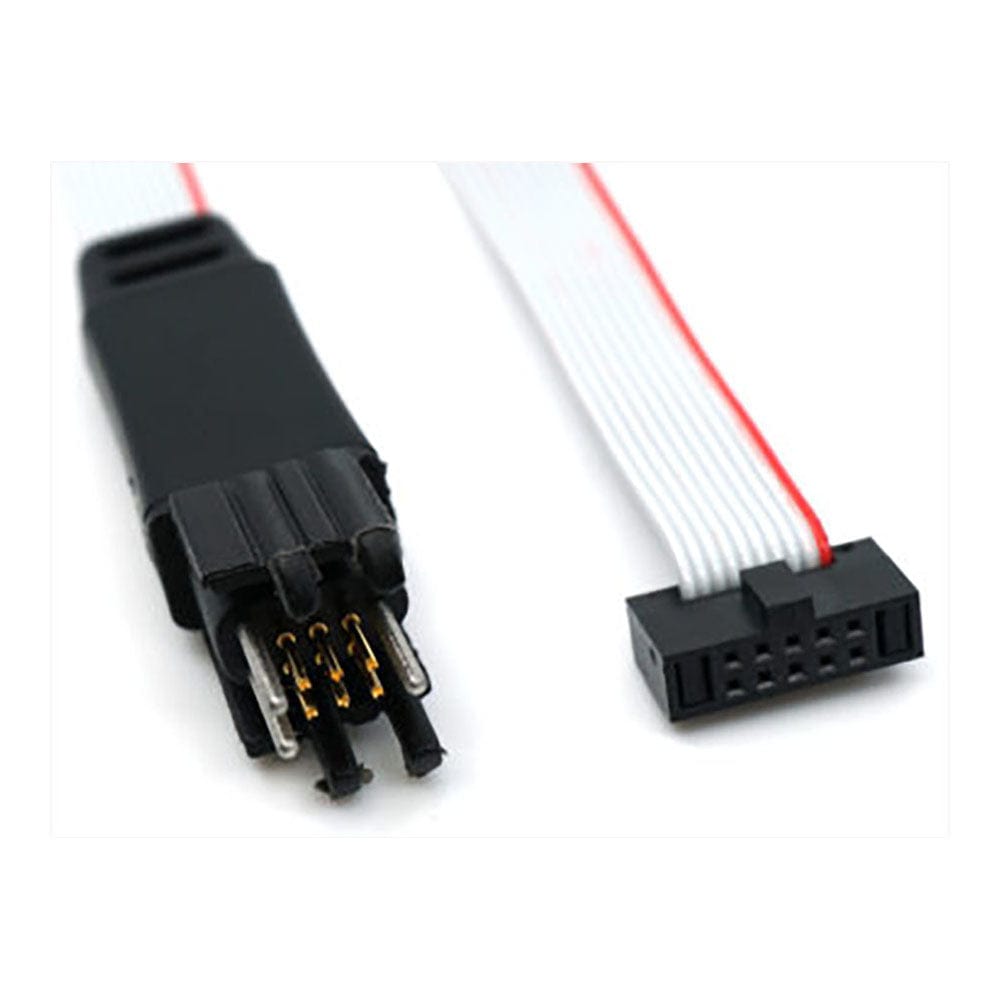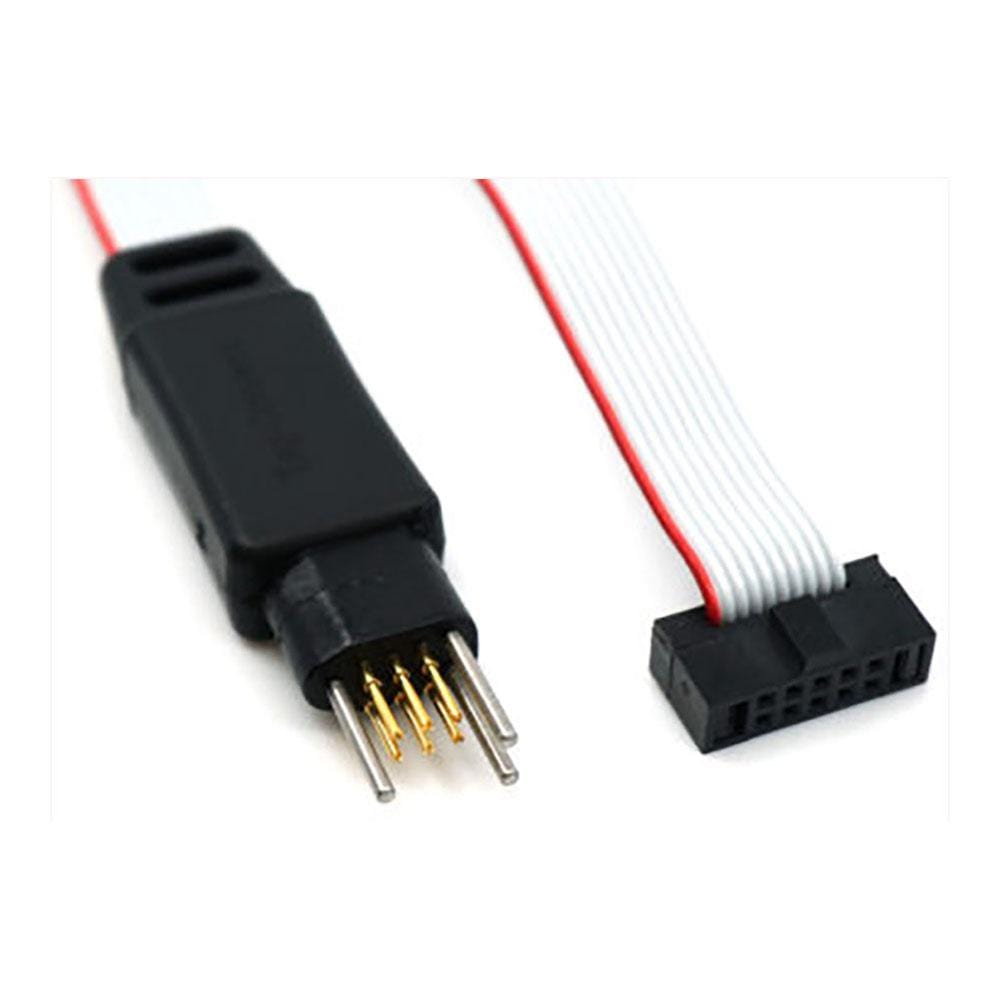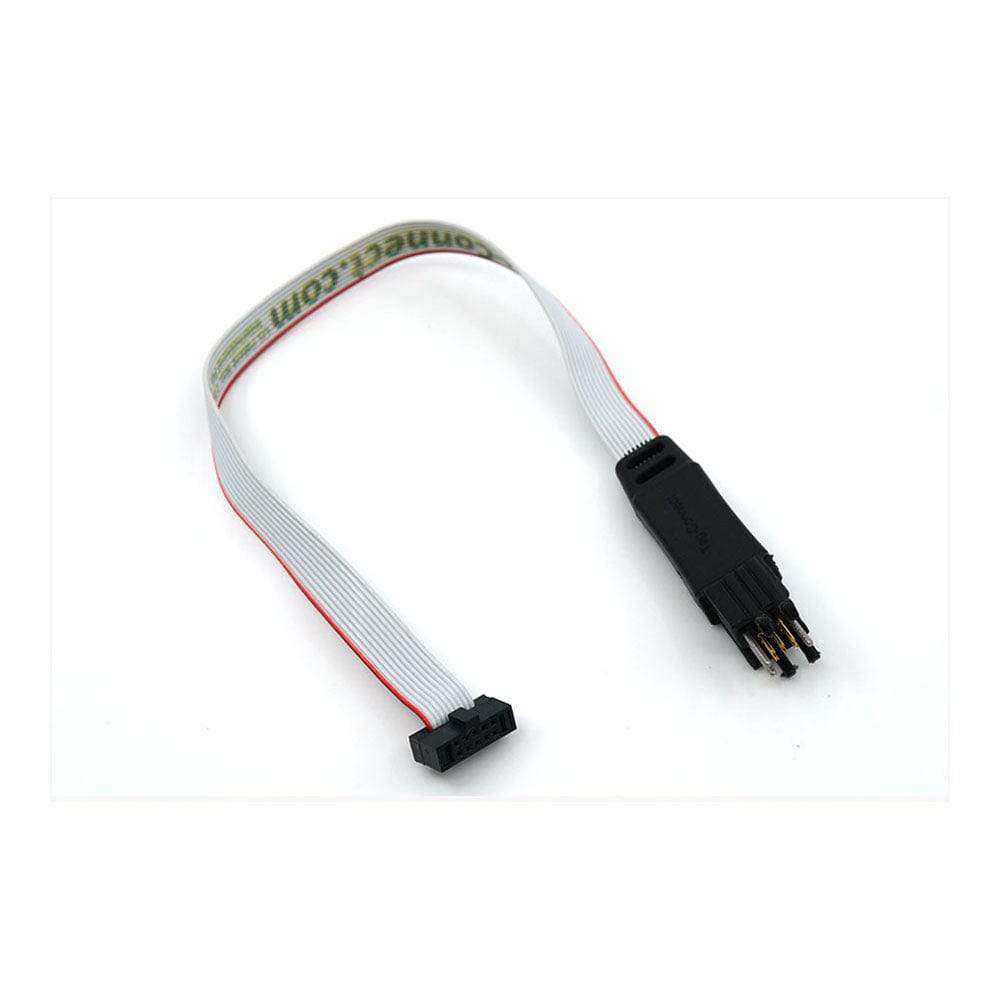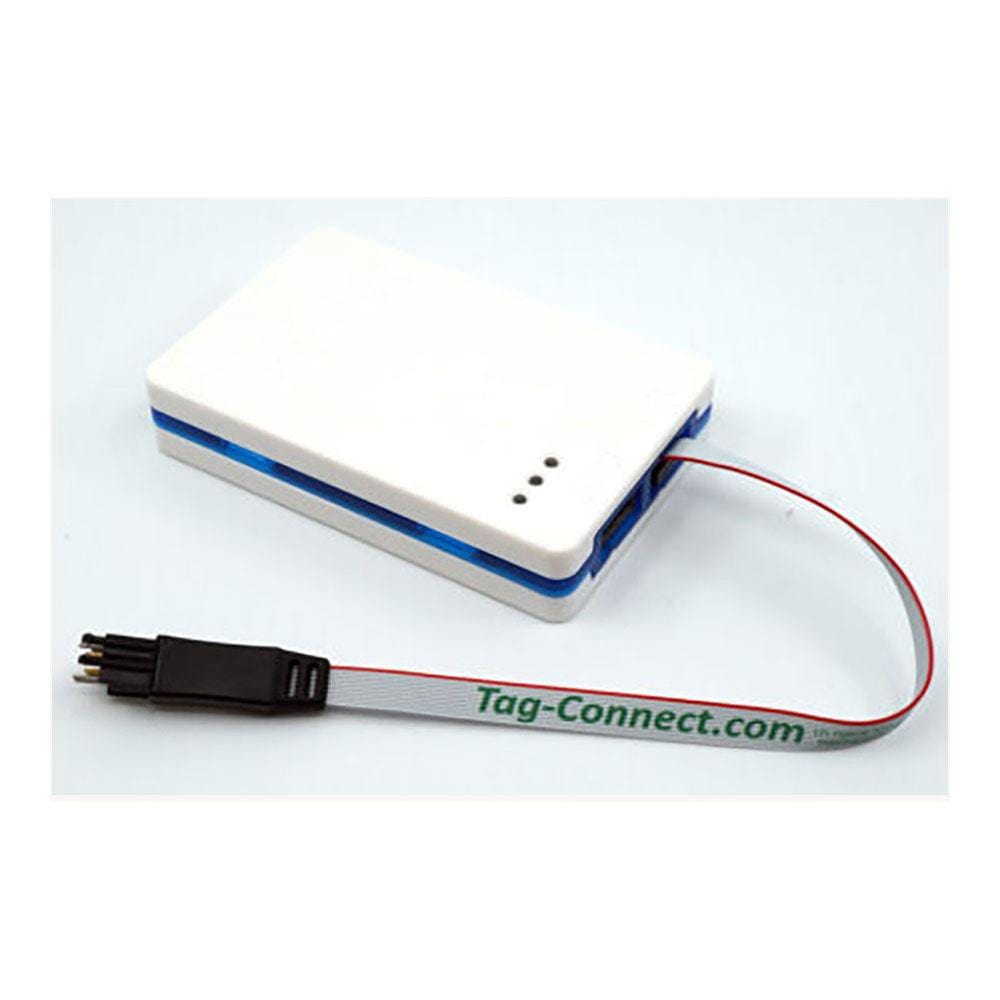
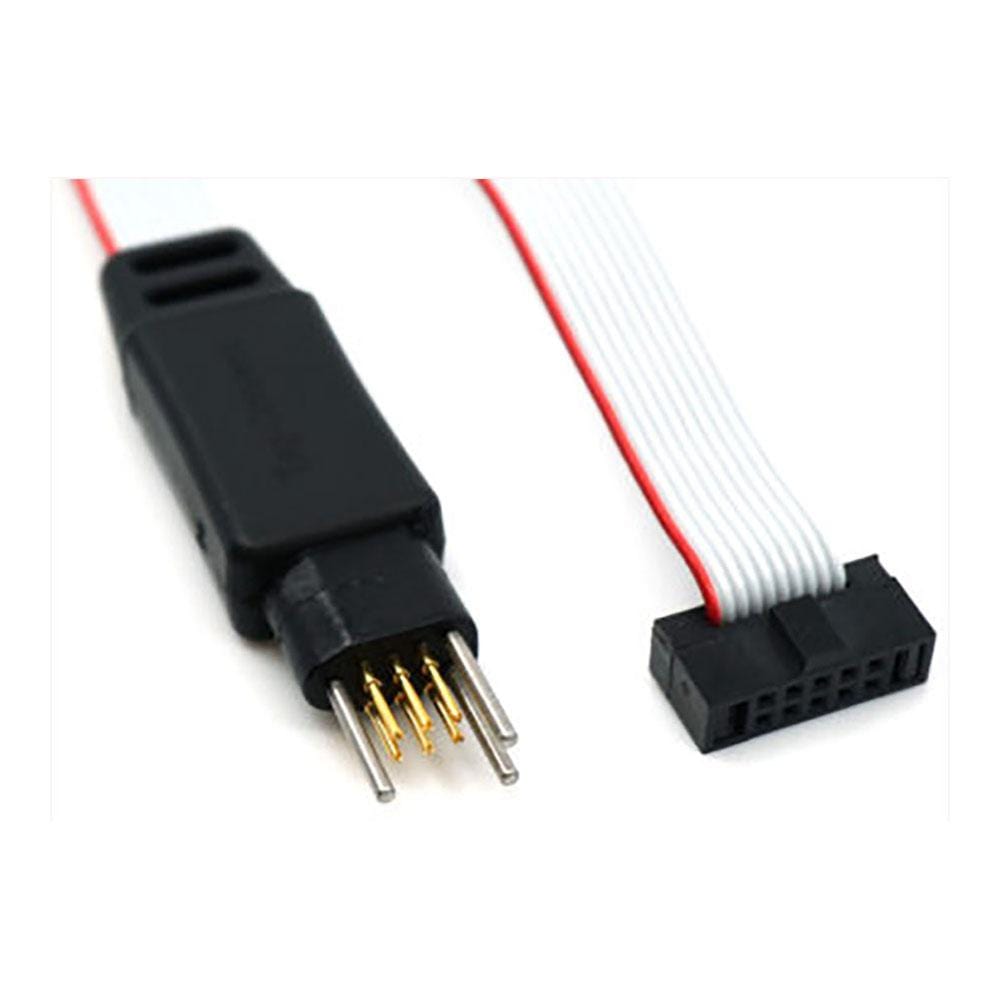

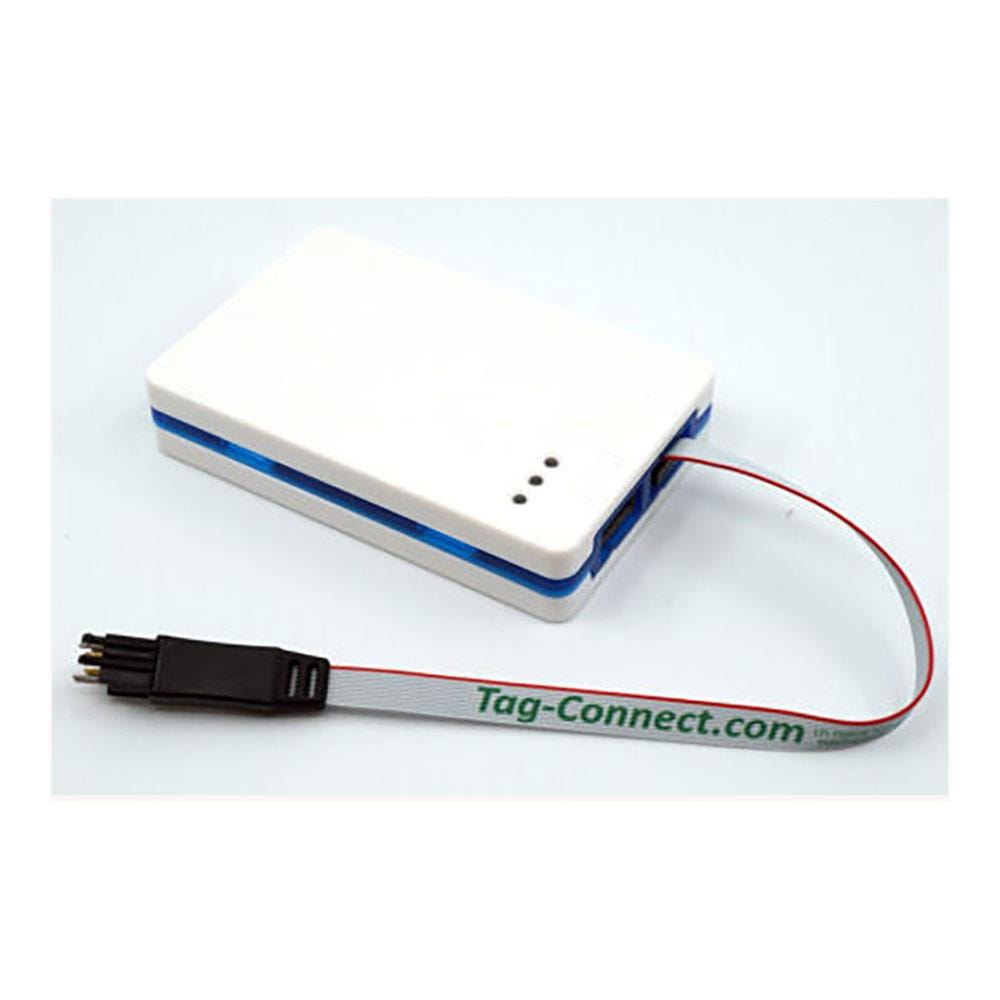
Key Features
Overview
Downloads
Professional AVR Development Solution
The TC2030-ICESPI programming cable represents the pinnacle of professional AVR microcontroller development tools. Engineered specifically for Atmel-ICE compatibility, this cable bridges the gap between sophisticated debugging hardware and space-constrained embedded designs. The innovative Tag-Connect technology eliminates traditional programming headers whilst maintaining the reliability and functionality demanded by professional development environments.
Comprehensive Protocol Support
Supporting the complete spectrum of AVR programming interfaces, the TC2030-ICESPI ensures compatibility across the entire AVR microcontroller family. From classic ATmega devices using SPI and debugWIRE protocols to modern tinyAVR chips supporting TPI and UPDI interfaces, this single cable serves diverse development requirements.
Wiring Quick-Start Guide
Connecting the TC2030-ICESPI requires careful attention to the Atmel-ICE's unique pin arrangement. The 10-pin IDC connector features reversed pin numbering compared to standard ARM debug connectors, necessitating the LEMTA version for proper operation.
| TC2030 Pin | Signal | Atmel-ICE Pin | Description |
|---|---|---|---|
| 1 | MISO/TDO | 3 | Master In, Slave Out / Test Data Out |
| 2 | VTG | 4 | Target voltage reference |
| 3 | SCK/TCK | 1 | Serial Clock / Test Clock |
| 4 | MOSI/TDI | 9 | Master Out, Slave In / Test Data In |
| 5 | /RESET | 6 | Target reset (active low) |
| 6 | GND | 2,10 | Ground reference |
PCB Footprint Implementation
The TC2030 footprint requires precise implementation to ensure reliable mechanical and electrical connections. The design incorporates six contact pads with specific dimensions and four alignment holes for the legged connector variant.
Programming Protocol Details
SPI Interface Programming
The Serial Peripheral Interface provides the foundation for AVR programming across all device variants. Operating at frequencies up to 5MHz, SPI programming offers robust, reliable firmware updates with comprehensive fuse and lock bit control.
// SPI Programming Sequence Example // 1. Assert RESET (low) // 2. Apply programming enable sequence // 3. Poll for programming mode acknowledgment // 4. Execute memory operations // 5. Release RESET to exit programming modedebugWIRE Interface
The debugWIRE protocol transforms the RESET pin into a bidirectional debugging interface, enabling real-time program execution control, breakpoint management, and memory inspection without additional hardware pins.
PDI Protocol for XMEGA Devices
Program and Debug Interface provides high-speed programming and debugging for XMEGA microcontrollers. Using a two-wire interface with clock and bidirectional data signals, PDI enables efficient flash, EEPROM, and configuration memory access.
Production Programming Considerations
For high-volume production environments, the TC2030-ICESPI-NL no-legs variant offers rapid programming cycles without mechanical wear on PCB footprints. The legged version excels in development scenarios requiring extended debugging sessions with hands-free operation.
Signal Integrity and Performance
The 6-inch cable length represents an optimal balance between flexibility and signal integrity. High-frequency programming protocols benefit from minimised transmission line effects, whilst the ribbon cable construction provides controlled impedance characteristics essential for reliable data transmission.
Compatibility and Ecosystem Integration
Beyond Atmel-ICE compatibility, the TC2030 ecosystem includes variants for SEGGER J-Link, ST-LINK, and PICkit programmers. This standardisation enables consistent PCB footprints across diverse debugging tool requirements, simplifying design validation and production programming workflows.
| General Information | |
|---|---|
Part Number (SKU) |
TC2030-ICESPI
|
Manufacturer |
|
| Physical and Mechanical | |
Weight |
0.1 kg
|
| Other | |
EAN |
5055383665204
|
Frequently Asked Questions
Have a Question?
-
Can multiple cables share the same PCB footprint design?
Yes, the TC2030 footprint is standardised across legged and no-legs variants, enabling design flexibility between development and production programming approaches.
-
What cable length is optimal for signal integrity?
The standard 6-inch length minimises noise and crosstalk for high-speed programming protocols. Longer variants are available but may require reduced programming speeds.
-
Is the TC2030-ICESPI compatible with Arduino development?
Yes, when using Microchip Studio (formerly Atmel Studio) with Arduino cores. The cable enables professional debugging of Arduino projects using AVR microcontrollers.
-
How does the legged connector attach to the PCB securely?
Four precision-moulded plastic legs clip into dedicated 0.039" diameter holes in the PCB footprint, providing mechanical retention whilst spring-loaded pins maintain electrical contact.
-
What's the maximum programming speed supported by this cable?
The cable supports SPI clock frequencies up to 5MHz, PDI/JTAG up to 7.5MHz, and debugWIRE up to 500kbit/s, matching Atmel-ICE specifications for optimal performance.
-
Can this cable work with other debuggers besides Atmel-ICE?
This specific cable is optimised for Atmel-ICE. Other debuggers require different variants with appropriate connectors. Check Debug Store's Tag-Connect catalogue for compatible alternatives.
-
What PCB footprint modifications are required for TC2030 connectors?
The footprint requires six contact pads and four small alignment holes. Complete footprint specifications and Gerber files are available from Tag-Connect ensuring PCB compatibility.
-
Why do I need the LEMTA version for Atmel-ICE debuggers?
Atmel-ICE has reversed pin numbering on its 10-pin connectors. LEMTA cables have the IDC connector installed backwards to correct this reversal, ensuring proper signal connections.
Choose LEMTA version when:
- Using any Atmel-ICE debugger (Basic, Full Kit, or Embedded variants)
- Connecting to either the AVR or SAM ports on Atmel-ICE
- You see "Atmel-ICE" specifically mentioned in your debugger model
Choose standard version when:
- Using SEGGER J-Link debuggers
- Using ST-LINK programmers
- Using PICkit 4/5 or SNAP programmers
- Using any other debugger that follows standard ARM pinout conventions
-
What's the difference between TC2030-ICESPI and TC2030-ICESPI-NL versions?
The standard version has four plastic legs that clip into PCB holes for secure hands-free debugging, whilst the NL (no-legs) version requires manual holding or clip boards for rapid production programming.
-
What programming protocols does the TC2030-ICESPI cable support?
The cable supports SPI, TPI, PDI, aWire and debugWIRE programming interfaces, covering virtually all AVR microcontroller variants from classic ATmega to modern tinyAVR devices.

